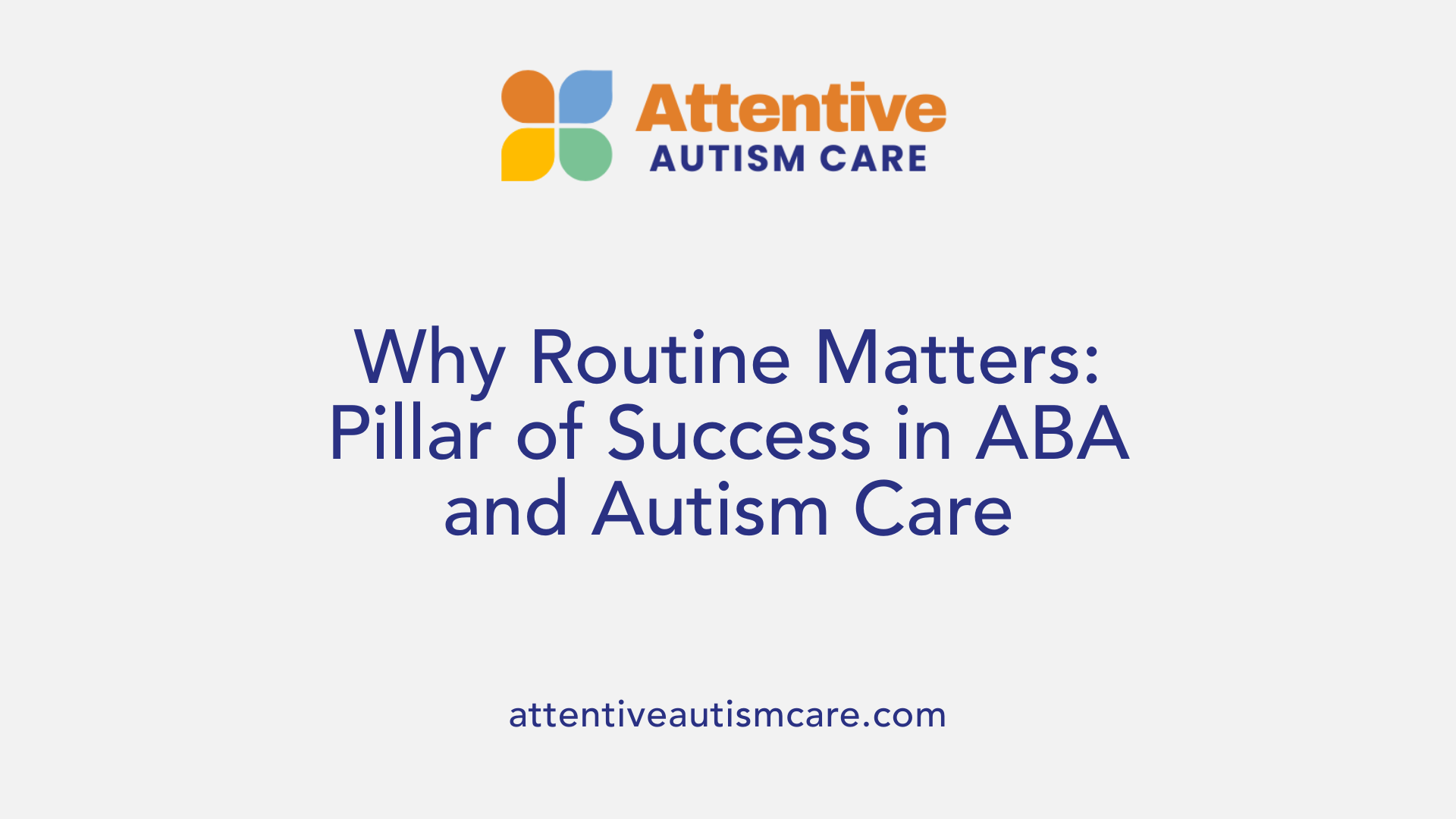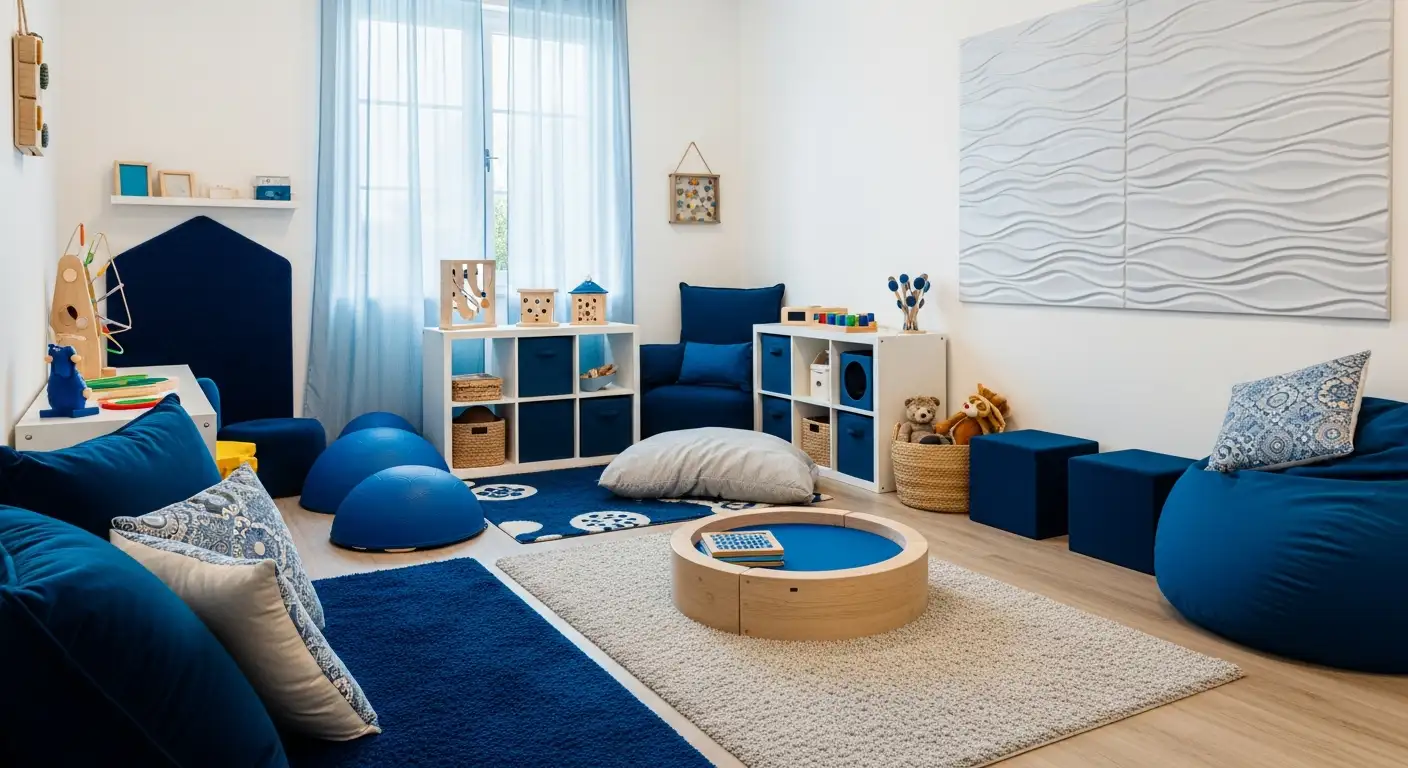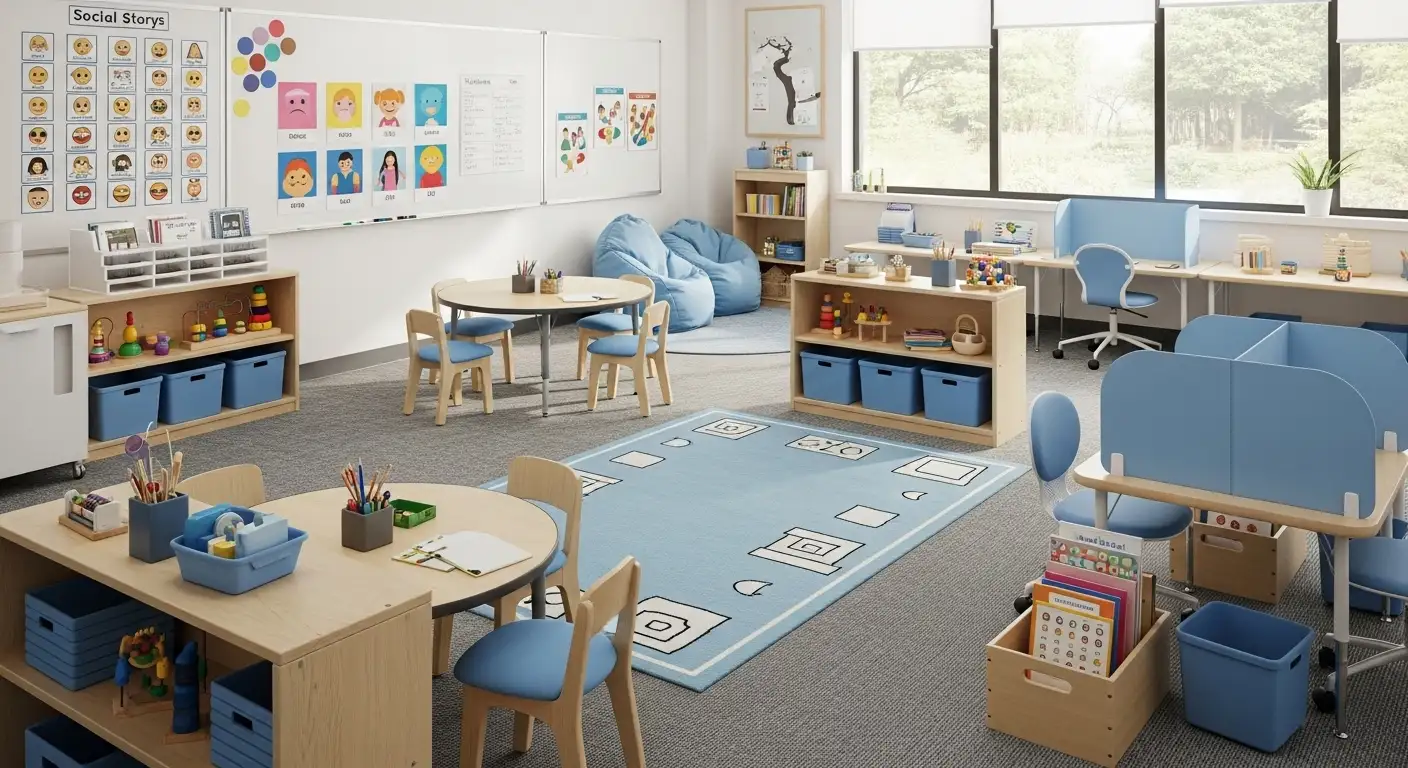The Importance of Routine for Children with Autism
How Structured Routines Empower Children with Autism to Thrive

Understanding the Role of Routine in Autism Support
Routines offer a foundation of predictability and security that is especially vital for children with autism. Establishing structured daily schedules not only reduces anxiety but also fosters skill development and positive behavior. This article explores how routines function within Applied Behavior Analysis (ABA) therapy frameworks and why consistent, yet flexible, approaches are key to supporting children on the spectrum.
What Is Applied Behavior Analysis (ABA) Therapy and Its Role in Autism Support?
What is Applied Behavior Analysis (ABA) therapy, and how does it help individuals with autism?
Applied Behavior Analysis (ABA) therapy is a scientifically established and evidence-based approach used primarily to support individuals with autism spectrum disorder (ASD). It focuses on understanding and modifying behaviors to promote positive outcomes.
ABA therapy involves teaching essential skills such as communication, social interaction, and daily living capabilities. It achieves these goals through methods grounded in behavioral science principles, including operant conditioning, positive reinforcement, and task analysis. These techniques help children acquire new skills by breaking them down into smaller, manageable steps and rewarding desired behaviors.
Programs are carefully personalized based on detailed assessments to meet each child's unique needs. This individualization enhances the effectiveness of interventions and supports progress toward functional goals.
Research consistently shows that ABA therapy significantly improves social skills, communication abilities, adaptive behaviors, and reduces challenging behaviors like anxiety or separation distress in children with autism. Early and intensive application of ABA has demonstrated the best outcomes.
In summary, ABA therapy helps individuals with autism by fostering independence, flexibility, and confidence in handling daily routines and social situations. Through structured, reinforcement-driven strategies, it supports meaningful skill development and improved quality of life.
Who Provides ABA Therapy and How Is It Delivered?

Types of ABA Providers
ABA therapy services are mainly delivered by a range of qualified professionals, including board-certified behavior analysts (BCBAs) and certified behavior technicians (CBTs). These individuals have specialized training in autism interventions and behavior analysis. They might work independently, within clinics, or as part of multidisciplinary teams in organizations dedicated to evidence-based ABA treatment.
Qualifications of Professionals
Professionals providing ABA therapy hold certifications that reflect their expertise and commitment to ethical practices. BCBAs must complete rigorous training, pass certification exams, and often engage in ongoing education. Similarly, CBTs receive specific training to implement therapy plans under BCBA supervision. This structured certification ensures therapists possess the knowledge to design, implement, and evaluate individualized treatment plans.
Role of Caregivers and Family
Caregivers and family members play a critical role in ABA therapy by reinforcing skills learned during sessions and supporting routine implementation at home. Their participation helps generalize behaviors across environments, making therapy more effective. Therapists often train families to use tools like visual schedules and reinforcement strategies, enabling consistent practice beyond clinical settings.
Settings for ABA Therapy
ABA therapy can take place in various settings tailored to the child's needs. Common environments include specialized clinics, schools, and the child's home. Home-based therapy ensures routines are practiced in natural settings, promoting skill generalization. Some programs combine settings to provide a comprehensive approach, facilitating smoother transitions between environments.
The collaboration among certified professionals, involved caregivers, and flexible settings ensures that ABA therapy effectively supports children with autism in mastering skills, managing routines, and enhancing independence.
Core Techniques and Components of ABA Therapy Supporting Routines

What are the key components or techniques used in ABA therapy?
ABA therapy uses several methods to support learning and daily routines for children with autism. One fundamental technique is Discrete Trial Training (DTT). This method breaks skills down into small, manageable steps and teaches each step in a structured way through repeated practice. DTT helps children master new behaviors by reinforcement and repetition.
Visual schedules are another vital tool in ABA interventions. These schedules use pictures or symbols to outline daily activities, helping children predict what will happen next. Providing this consistency reduces anxiety and improves understanding of daily routines.
Reinforcement, especially positive reinforcement, plays a crucial role. Reinforcing desired behaviors through rewards encourages children to repeat those behaviors, making learning more effective and enjoyable.
ABA also incorporates task analysis and behavior chains, which involve breaking complex tasks into sequenced steps that children learn one at a time. This systematic approach fosters independence in performing daily activities.
The ABC model—Antecedent, Behavior, Consequence—is used extensively to analyze behavior patterns. By understanding what triggers a behavior and what follows, therapists can develop specific interventions to encourage positive behaviors and reduce challenging ones.
Together, these techniques form a comprehensive framework that is individualized for each child. ABA integrates these components with ongoing data collection and adjustments, ensuring the therapy supports skill acquisition, routine management, and adaptability for children with autism.
Why Routine Is Vital in ABA Therapy and Autism Care

How Does Routine Provide Predictability for Children with Autism?
Routine offers a structured framework that children with autism can anticipate, fostering a sense of control over their surroundings. This predictability helps reduce feelings of uncertainty, which often trigger anxiety in these children. When children know what to expect, they can navigate their day with greater confidence and calmness.
How Does Routine Help Reduce Anxiety?
Consistent routines reduce anxiety by minimizing unexpected events and transitions, which can be sources of stress. Transition strategies such as countdowns, visual schedules, and verbal prompts help ease shifts between activities. By preparing children for changes ahead of time, these strategies create smoother transitions and lower stress levels.
How Does Routine Support Mastery of Skills and Generalization?
Routines break down complex tasks into smaller, manageable steps repeated consistently. This repetition, supported by techniques like task analysis commonly used in ABA therapy, helps children gradually master skills. Furthermore, practicing these skills within structured routines allows children to generalize their learning across different environments, such as home and school.
How Does Consistency Encourage Positive Behaviors?
Clear expectations combined with consistent routines establish predictable behavioral standards. Children learn which behaviors are expected and receive reinforcement when they meet these standards. Reinforcement, a core principle of ABA, strengthens desired behaviors by providing rewards, which encourages children to repeat those behaviors regularly.
ABA therapists utilize individualized routines incorporating visual schedules, structured activities, and lasting positive reinforcement to optimize learning and independence. Caregivers can support these routines at home by using visual aids and timers, along with celebrating children’s successes, which boosts motivation and engagement.
| Aspect | Explanation | ABA Support |
|---|---|---|
| Predictability | Routine provides a clear structure to reduce surprises | Visual schedules and countdowns ease transitions |
| Anxiety Reduction | Consistent routines and transition strategies lower stress | Use of prompts and reinforcement to maintain calm |
| Skill Mastery & Generalization | Breaking tasks into steps and repeated practice aid learning | Task analysis and positive reinforcement |
| Positive Behavior | Clear expectations reinforced through consistent routines | Rewards encourage desired actions |
Transition Strategies and Flexibility Within Routines
How Are Visual Schedules and Timers Used in ABA Therapy?
Visual schedules and timers are fundamental tools in ABA therapy that aid children with autism in understanding and anticipating daily transitions. These visual aids clarify what is expected at each stage, helping to reduce anxiety by making the flow of activities predictable. Timers signal the remaining time for an activity, which prepares children mentally for upcoming changes.
What Role Do Countdowns and Prompts Play in Smooth Transitions?
ABA therapists often incorporate countdowns and verbal or visual prompts to ease transitions between tasks or environments. Countdowns, such as notifying a child "5 minutes left," provide advance notice that helps the child adjust gradually to change. Prompts serve as gentle reminders or cues, offering support to maintain focus or initiate the next activity.
How Is Flexibility Gently Introduced to Build Resilience?
While routines offer structure, fostering adaptability is key for long-term success. ABA therapists strategically introduce slight variations within routines, such as minor changes in the order of tasks or unexpected elements, to cultivate children's resilience and ability to handle change. This careful approach balances predictability with flexibility, enhancing coping skills without overwhelming the child.
How Are Sensory Sensitivities and Communication Barriers Addressed During Transitions?
Transitions can be challenging due to sensory sensitivities or communication difficulties common in autism. ABA strategies tailor support to individual needs, employing sensory-friendly environments and personalized communication aids. For example, visual prompts might replace spoken instructions for children with language delays, while therapists adjust stimuli to help the child remain calm and engaged.
Through the use of structured tools like visual schedules, clear transition techniques like countdowns, and customization to sensory and communication needs, ABA therapy facilitates smoother transitions. The progressive introduction of flexibility further empowers children to adapt confidently to everyday changes.
The Impact of Routine on Behavioral and Social Outcomes

Behavioral improvements with routine
Consistent daily routines create a predictable environment for children with autism, which reduces anxiety and helps them feel more in control. This predictability encourages positive behaviors as children understand what to expect, making behavioral challenges less frequent. ABA therapy uses structured routines to break tasks into manageable steps, supporting skill mastery through repetition and gradual progression.
Enhancing social skills and communication
Structured routines in ABA also facilitate social and communication skill development. Visual schedules and carefully planned activities guide children through social interactions and emotional responses, improving their ability to participate in group settings. Research shows ABA programs that focus on social and emotional tendencies, such as those measured by the Kindergarten Inventory of Social/Emotional Tendencies (KIST), produce significant gains in these areas.
Reinforcement to maintain behavior
Reinforcement is fundamental in ABA, rewarding desired behaviors to promote their recurrence. Incorporating consistent reinforcement within routines supports the maintenance of newly learned skills and behaviors. This approach motivates children and strengthens their engagement with therapy. Celebrating small successes at home further solidifies positive behaviors and independence.
Evidence supporting ABA in improving adaptive behaviors
Science-backed studies confirm that ABA significantly enhances adaptive behaviors, including communication, self-care, and social skills, while reducing anxiety and challenging behaviors. Programs involving individualized instruction, positive reinforcement, visual aids, and transition strategies demonstrate meaningful improvements across settings like home and school. Parental involvement and the generalization of skills reinforce long-term success, making ABA an essential therapeutic approach for children with autism spectrum disorder.
Addressing Challenges and Criticisms of ABA Therapy
Are there any challenges or criticisms associated with ABA therapy?
Applied Behavior Analysis (ABA) therapy, while widely recognized for its benefits, has faced a number of challenges and criticisms over the years. Historically, some ABA approaches used aversive methods that could cause emotional distress or even trauma if not applied ethically and sensitively. These early practices have led to ongoing concerns about the potential negative emotional impact on children.
Critics also point out that ABA’s strong focus on modifying behavior may inadvertently suppress behaviors that individuals find meaningful or necessary for self-regulation, such as stimming. This can affect a person's sense of identity and overall well-being, raising important discussions about respecting neurodiversity and personal autonomy.
The intensity and cost of traditional early intervention ABA programs can be barriers for many families. These programs often require multiple hours of therapy per week, which might not be feasible for everyone. Although newer approaches tend to emphasize individualized, flexible plans that are less rigid, financial and logistical challenges still exist.
There are debates about whether ABA promotes conformity over acceptance, with critics advocating for therapies that honor the unique traits and preferences of each autistic individual. However, advocates stress that modern ABA has evolved to include person-centered care, using positive, naturalistic strategies that aim to improve independence and quality of life without compromising dignity.
Ultimately, continuous efforts are being made within the ABA community to refine methods, ensuring that interventions are respectful, ethical, and supportive of each child's individuality and development.
How Families Can Access and Support Routine Development with ABA Therapy

How can families access ABA therapy services for their loved ones with autism?
Families have multiple avenues to access ABA therapy for their loved ones with autism. Funding options include private health insurance, Medicaid, and government programs such as Children's Special Health Services and Medicaid waivers. Many insurance plans, particularly those mandated under Indiana's autism insurance legislation, cover ABA therapy when it’s deemed medically necessary. In addition to insurance, families can explore grants from organizations like Autism Speaks, Autism Society of Indiana, or local foundations that provide financial assistance.
Public schools may also offer behavioral supports through the Individualized Education Program (IEP) process, though these services differ from medical insurance coverage. To navigate these options effectively, families should connect with healthcare providers, autism specialists, insurance advocates, and community resources to understand eligibility and how to apply.
What is the role of caregivers in reinforcing routines at home?
Caregivers play a crucial role in supporting routine development taught in ABA therapy. They reinforce consistent daily schedules using visual aids, timers, and positive reinforcement to help children understand expectations and transitions. Celebrating small successes motivates children and strengthens learned behaviors.
What practical strategies can be applied at home?
Practical strategies include:
- Using visual schedules to outline daily tasks.
- Employing timers or countdowns to prepare children for transitions.
- Breaking tasks into smaller, manageable steps.
- Providing consistent reinforcement like praise or rewards for positive behavior.
These approaches align with the structured routines created by therapists, fostering skill mastery and reducing anxiety.
How can families collaborate with therapists for consistency?
Collaboration between families and ABA therapists ensures consistent implementation of routines across settings. Therapists design individualized programs incorporating structured activities and reinforcement schedules. They also introduce gentle flexibility to help children adapt to change.
Regular communication between caregivers and therapists allows for adjustments based on the child’s progress and challenges. This partnership enhances generalization of skills, making routines effective both at home and in therapy sessions.
Building Comfort and Competence Through Routine
For children with autism, routines serve as a vital framework that supports emotional stability and skill acquisition. Integrated within ABA therapy, consistent and structured routines enable these children to thrive by reducing anxiety, promoting mastery through repetition, and encouraging positive behaviors. While addressing challenges and embracing flexibility, therapists and families collaborate to craft individualized schedules that build independence and resilience. In embracing routine, caregivers and practitioners help children with autism navigate their environments confidently, fostering meaningful growth and improved quality of life.
References
- The Role of Routine in ABA Therapy: Helping Children Thrive
- How ABA Therapy Builds Consistency for Lasting Success
- How ABA Therapy Helps with Daily Routines
- The effectiveness of applied behavior analysis program ...
- Applied Behavior Analysis (ABA)
- Who Qualifies for ABA Therapy: Eligibility Guide
- Qualifications of Behavior Service Providers
- Applied Behavior Analysis (ABA)
- ABA Therapy Examples, Definition & Techniques



































































































